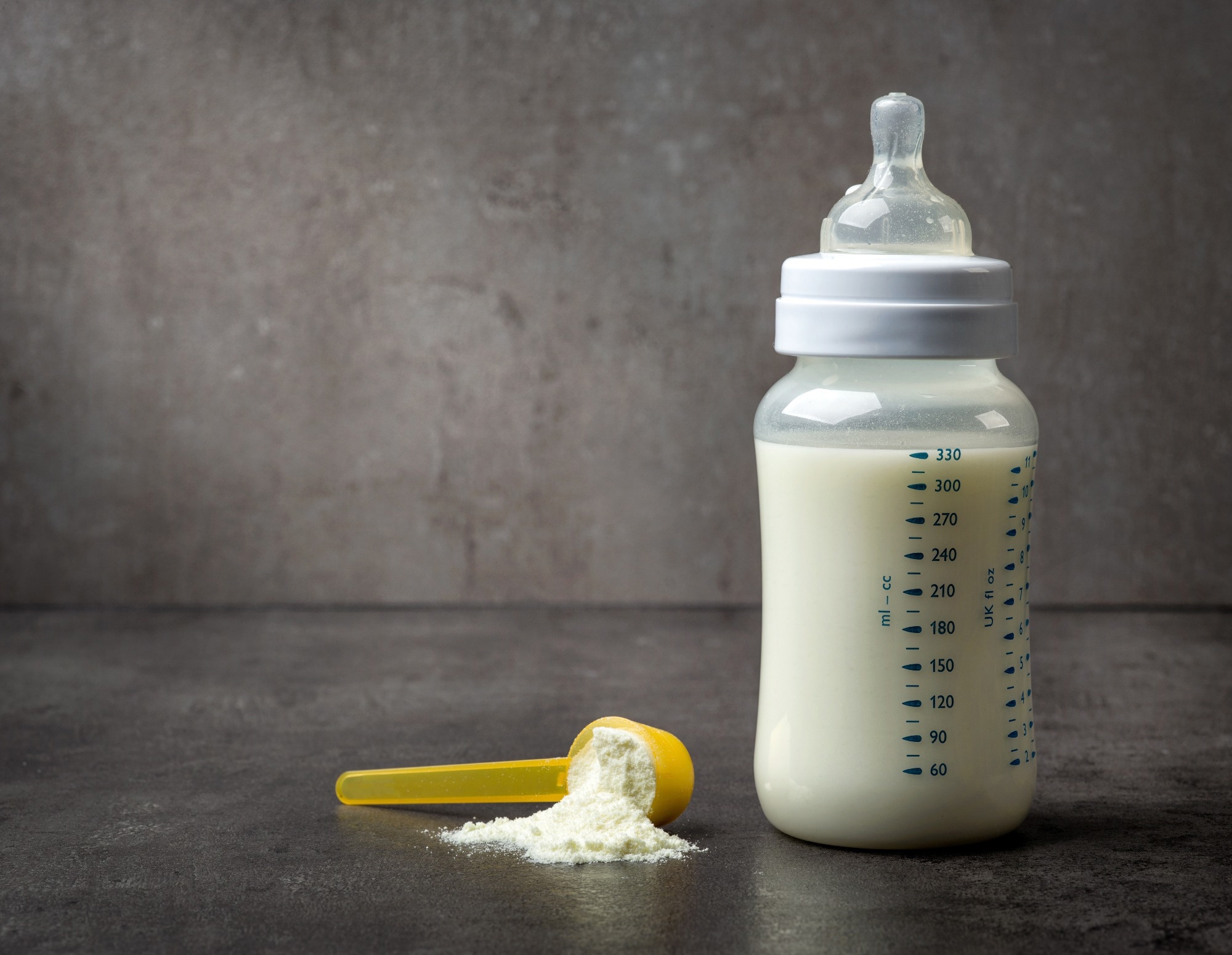In a recent study published in the journal Nutrients, researchers assess infant formula purchasing habits among United States residents. The researchers also compare the content of docosahexaenoic acid (DHA) and iron in the formulas to that recommended by international food regulatory authorities.
 Study: Iron and DHA in Infant Formula Purchased in the US Fails to Meet European Nutrition Requirements. Image Credit: MaraZe / Shutterstock.com
Study: Iron and DHA in Infant Formula Purchased in the US Fails to Meet European Nutrition Requirements. Image Credit: MaraZe / Shutterstock.com
Background
Infant formula is an alternative to breast milk that can meet infant dietary recommendations if provided exclusively in the initial six months of life (stage 1) and in combination with supplementary food items beyond six months (stage 2).
The DHA and iron content in infant formulas vary among countries. A comparative evaluation of the nutritional content of infant formula purchases in the U.S. and other countries could inform U.S. parents of inter-country differences and aid in determining the best nutrient options for their infants.
Over the past 10 years, several formulas have been imported illegally into the U.S. from various nations, especially from Europe, with importations increasing due to the scarcity of formula-based products for U.S. infants between 2022 and 2023.
In May 2022, the U.S. Food and Drug Administration (FDA) issued recommendations for permitting international formulas to receive transient authorization in the U.S. In January of 2023, the FDA approved the sale of various international formulas in the U.S.
About the study
Data for nationwide powdered infant formula product purchases between 2017 and 2019 were retrieved from the U.S. CIRCANA database. The purchase of concentrated and instant-feed formula products, as well as premature and toddler formulations, were excluded from the analysis.
Data on mean U.S. dollar (USD) sales and the weight of formula-based products sold for more than $7,000 USD annually between 2017 and 2019 were obtained. DHA and iron content, as well as scoop sizes in grams for formula-based products, were obtained from formula manufacturers. The formula equivalent to liquid ounces consumed was calculated.
The team compared the mean DHA and iron concentrations of infant formulas sold to U.S. residents to recommendations issued by regulatory authorities such as the FDA, CODEX Alimentarius, which represents the World Health Organization (WHO) and the United Nations Food and Agriculture Organization, as well as the European Commission.
The status of protein hydrolyzation in the formulas was categorized as amino-acid-based, partially hydrolyzed, completely hydrolyzed, or intact proteins. Formulas comprising amino acid-based or completely hydrolyzed proteins were classified as hypoallergenic formulas.
Results
A total of eight billion USD in sales between 2017 and 2019 was reported, which equates to 56 billion formula-equivalent ounces sold. About 6% of the sold infant formulas were soy protein-based, whereas 64% and 25% of the infant formulas purchased comprised intact proteins and incompletely hydrolyzed proteins, respectively. Moreover, 6% of the formula-based products purchased were hypoallergenic.
On average, infant formulas purchased by U.S. residents comprised 1.8 mg/100 kcal within the U.S. FDA regulations. However, these formulas exceeded the maximal permissible iron concentration for stage 1 infant formulas recommended by the EU of 1.30 mg/100 kcal. Among the products, the maximum and minimum iron concentrations in the purchased products were 1.9 and 1.0 mg/100 kcal, respectively.
Formulas comprising intact proteins comprised the highest amount of iron, whereas those comprising partially hydrolyzed proteins comprised the least amount of iron at mean values of 1.9 mg/100 kcal and 1.7 mg/100 kcal, respectively. About 96% of the formulas had an iron concentration exceeding 1.30 mg/100 kcal. DHA was not an essential component of U.S. infant formulas.
The mean DHA concentration among the purchased formulas was 13.0 mg/100 kcal, which is considerably below the minimal DHA content required for stage 1 and stage 2 infant formulas of 20 mg/100 kcal according to EU standards. The purchased product with the maximum DHA content comprised 17.0 mg/100 kcal of DHA.
Partially hydrolyzed dairy-based protein formulas represented the highest mean DHA content and amino acid-based formulas represented the lowest mean DHA content at 16 mg/100 kcal and 9.0 mg/100 kcal, respectively.
Conclusions
The mean DHA and iron content of infant formulas purchased in the U.S. fell below and above European Commission requirements, respectively. The study findings are particularly relevant due to the importation of foreign infant formula-based products into the U.S. market as a result of current infant formula shortages.
Irrespective of the percentage of stage 1 infants, most infants in the U.S. are exposed to toxic amounts of iron based on the EU standards, whereas exposure to comparable levels of iron is considered appropriate by the FDA. Parents and care providers must be aware of regulatory differences in formula nutrient composition.
Journal reference:
- Strzalkowski, A., Black, G., & Young, B.E. (2023). Iron and DHA in Infant Formula Purchased in the US Fails to Meet European Nutrition Requirements. Nutrients 15(1812). doi:10.3390/ nu15081812